SCOBY, a Uniquely Slippery Ingredient, Is Key When Making Your Own Kombucha
Updated Nov. 13 2023, 4:23 p.m. ET
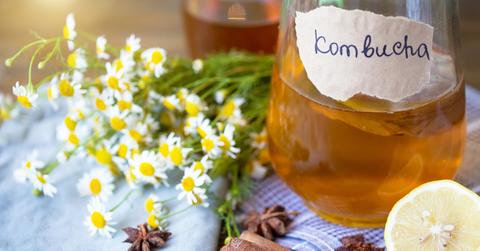
The Gist:
- SCOBY stands for symbiotic culture of bacteria and yeast.
- Using a SCOBY is vital when making kombucha.
- You can make your own SCOBY at home, and then use it to brew your own kombucha.
If you are used to drinking store-bought kombucha, you may not be familiar with the kombucha-making process. And upon Googling how to make it at home, you may have stumbled across a weird, jiggly-looking thing called a SCOBY (which you may have been surprised to come across in your store-bought kombucha, if you weren’t prepared). Such is the process of making DIY kombucha!
So, what is this Jell-O-like substance called a SCOBY? It resembles a chicken cutlet or a breast implant, and if you added googly eyes to it, it would probably look like an alien creature. But it’s actually none of the above — but it is the key to making kombucha at home.
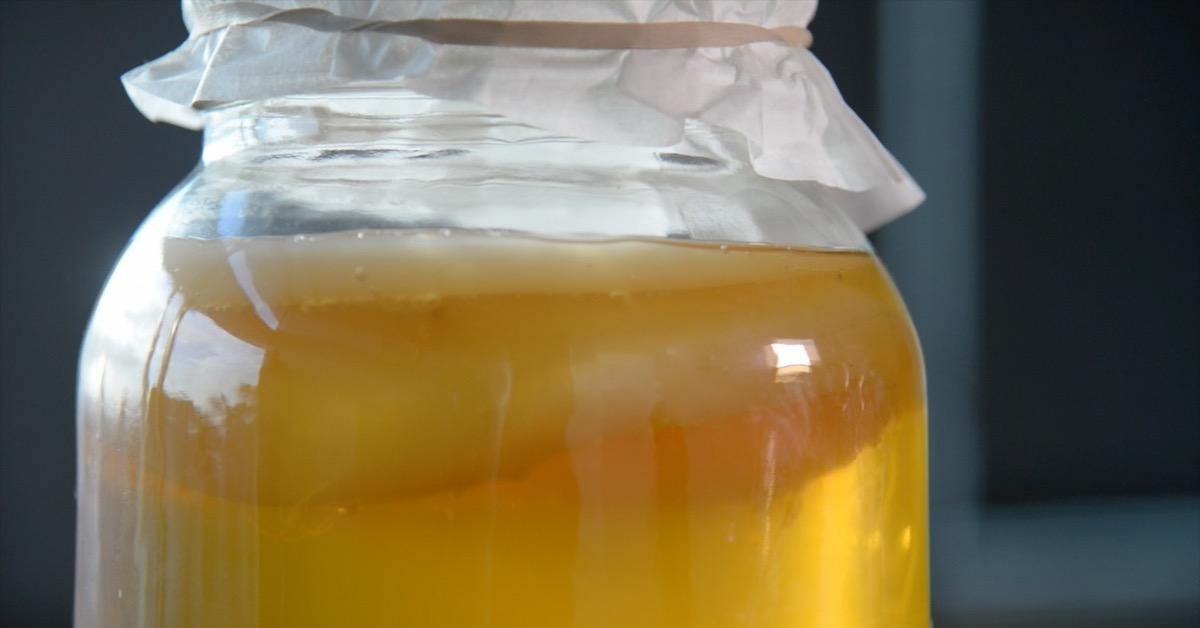
What does SCOBY stand for?
The word “SCOBY” is actually an acronym for “symbiotic culture of bacteria and yeast,” but you may have also heard SCOBYs referred to as “kombucha mothers” or “kombucha mushrooms.” Both are relatively accurate in that yes, it looks like a mushroom, and yes, it’s the “mother” of the kombucha; if you’re unfamiliar with kombucha, it’s a fermented — slightly alcoholic — tea (usually black or green tea) that’s full of probiotics.
In order to brew your own kombucha, you have to ferment the lactic acid bacteria (LAB), acetic acid bacteria (AAB), and yeast together. When that fermentation process is complete, you end up with a SCOBY, a cellulose-based biofilm that is also known as a SCOBY pellicle.
Keep reading for more on SCOBY and how to master the art of making kombucha at home.
What is SCOBY made of?
A SCOBY is a cellulose-based biofilm that results in the natural fermenting process of making kombucha. It forms together when you ferment the lactic acid bacteria (LAB), acetic acid bacteria (AAB), and yeast together.
Essentially, it is made of bacteria and yeast. It is essential to making kombucha because the SCOBY pellicle is the vessel in which the bacteria and yeast found in the kombucha can live.
What is SCOBY kombucha used for?
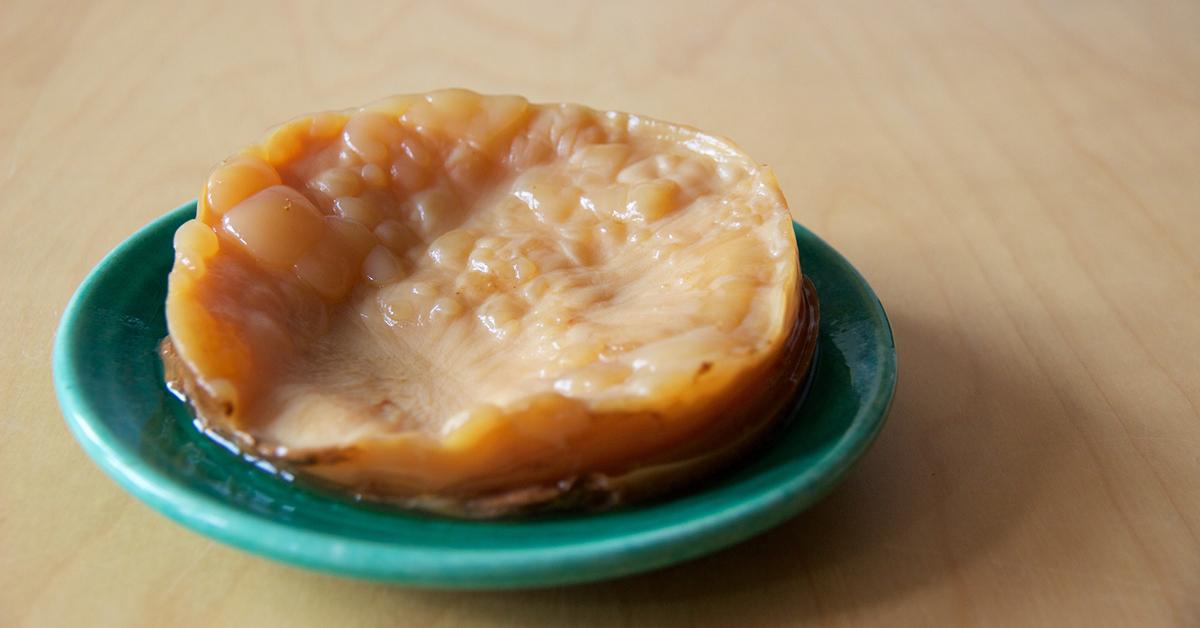
Also known as the “kombucha mother,” the SCOBY is the home for yeast and bacteria as they become kombucha. While the SCOBY is crucial for the kombucha transformation process, it is also important because it protects the fermenting kombucha from the outside air and potentially harmful bacteria that would spoil the kombucha. The SCOBY seals off the kombucha, protecting it from external sources so it has the space (and time) to become kombucha.
Without a SCOBY, kombucha is vulnerable to outside bacteria and other toxins in the air that could ruin the fermenting kombucha. If you see mold or the fermenting kombucha smells rancid or like cheese, something is awry with your SCOBY and the kombucha might not be safe to drink.
How do you make a SCOBY for kombucha?
A SCOBY is a naturally occurring part of the fermenting process, meaning that each time you ferment kombucha, you will inadvertently (although purposefully) make a new little SCOBY blob. After the fermentation process is done, the SCOBY will appear to be floating on the surface.
A SCOBY is grown from scratch when you combine tea, sugar, and premade kombucha. It takes anywhere from two to four weeks to grow a new SCOBY from scratch. The best environment for a growing SCOBY is a kitchen of about 70 degrees Fahrenheit.
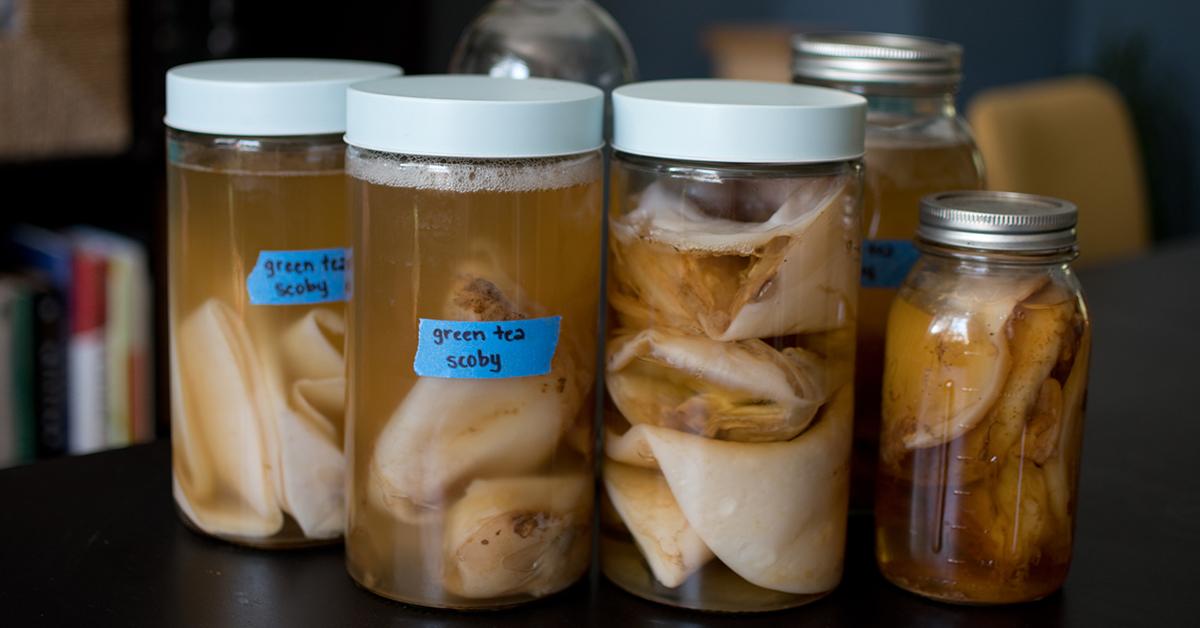
To make a SCOBY for kombucha, you will need 8 cups of water, 1 cup granulated sugar, 8 bags of either black or green tea, and 2 cups of a prepared kombucha starter tea. Bring the 8 cups of water to a boil in a large pan, add the sugar, then stir it until it dissolves. Next, turn off the heat and add the 8 tea bags — either black tea or green tea will work. You can let the mixture come down to room temperature on its own, or you can speed up the process by adding some ice cubes.
Next, pour the prepared kombucha starter tea into a 1-gallon jar, then add the room-temperature tea. Add enough cool water so that the mixture fills the jar. Next, cover the jar with two coffee filters, using a rubber band to adhere them securely. You’ll want to place your fermenting kombucha (and SCOBY) somewhere out of direct sunlight where it will consistently stay at room temperature. The SCOBY should form within two to four weeks and you will know it’s done once the SCOBY is about 1/4-inch thick.
How do you make a SCOBY without a starter?
There is a way to make a SCOBY without a starter, and that way is with good old-fashioned vinegar. Fill your saucepan with water and bring it to a boil. Once the water is boiling, add 1 cup granulated sugar, stirring it until it dissolves. When the sugar is fully dissolved, pull the mixture off the heat and add the eight tea bags of either green or black tea. Once the mixture comes down to room temperature, pour it into a 1-gallon jar. Next, add 1 tablespoon of naturally brewed vinegar such as apple cider vinegar or even distilled white vinegar.
Add enough cool water to fill the jar. Next, cover the jar with two coffee filters, using a rubber band to adhere them securely. You’ll want to place your fermenting kombucha (and SCOBY) out of direct sunlight for about two to four weeks.
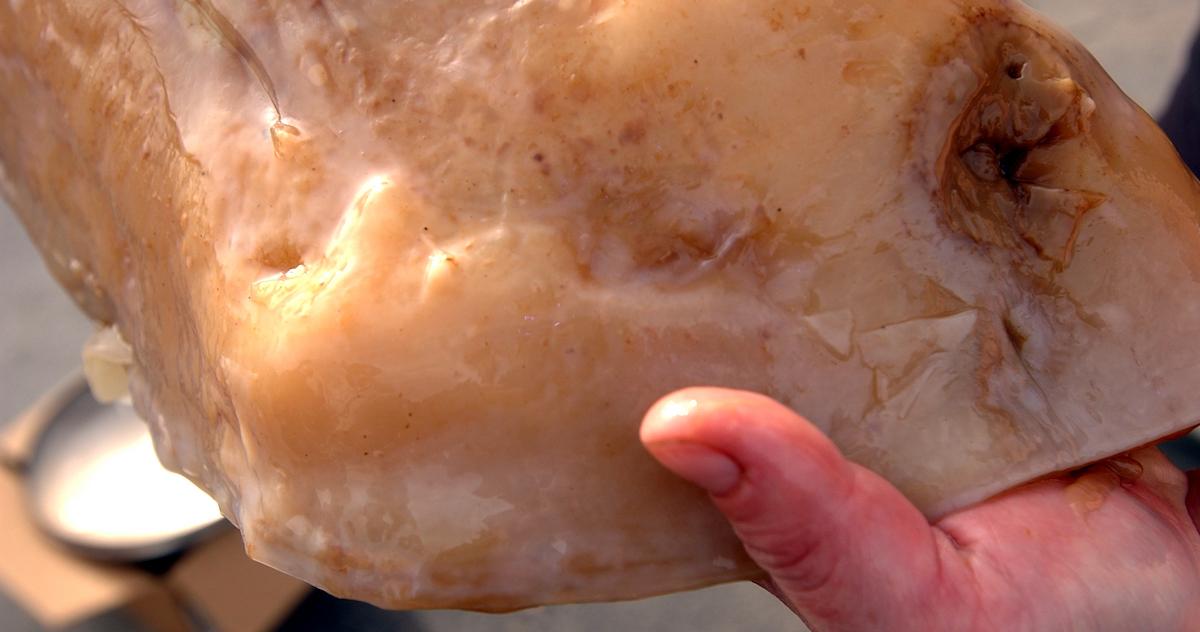
Kathy Parker of Tea Chi holds a Kombucha culture
How do you make a SCOBY hotel?
First of all, what is a SCOBY hotel? Since SCOBY breeds more SCOBY, it is a kind of never-ending cycle of making kombucha. But, if you need a kombucha-making break, a SCOBY hotel is a convenient way to keep your SCOBY on retainer while ensuring that it stays fresh.
To make a SCOBY hotel, you will need to clean a large glass container. Put each SCOBY inside the jar then add one part completed kombucha and three parts fresh sweet tea. This mixture should cover all of your SCOBY; none should be above the liquid level.
Put two coffee filters on top of the SCOBY hotel, securing it with a rubber band. Place the hotel in a dry, warm place for two weeks. The liquid in your SCOBY hotel should be replaced with a fresh kombucha-sweet tea mixture every few weeks to keep your SCOBY healthy. If you don’t change the liquid, the SCOBY could go bad.
How to make your own kombucha:

Once you have grown your own SCOBY from scratch, you are ready to make your own homemade kombucha.
Transfer the tea so far into a 1-gallon jar and add the SCOBY. For 1 gallon, you will need the help of two SCOBY. Place two coffee filters over the top of the jar, securing it with a rubber band. Place the fermenting kombucha out of direct sunlight and make sure it consistently stays at room temperature. After it has fermented for about seven days, you can start tasting it. You’ll know it’s done when it tastes good to you — not too sweet but not too tart. It’s really all about your preference but it should be complete within seven to 10 days.
You should notice a new SCOBY forming. Eventually, it will likely attach to the original SCOBY. When the kombucha is ready to be bottled, you can start the fermentation process all over again and pour it over the already-used SCOBY. If you would prefer to bottle the kombucha and take a kombucha-making break, check out the above instructions for a SCOBY hotel.
This article, originally published on June 29, 2020, has been updated.